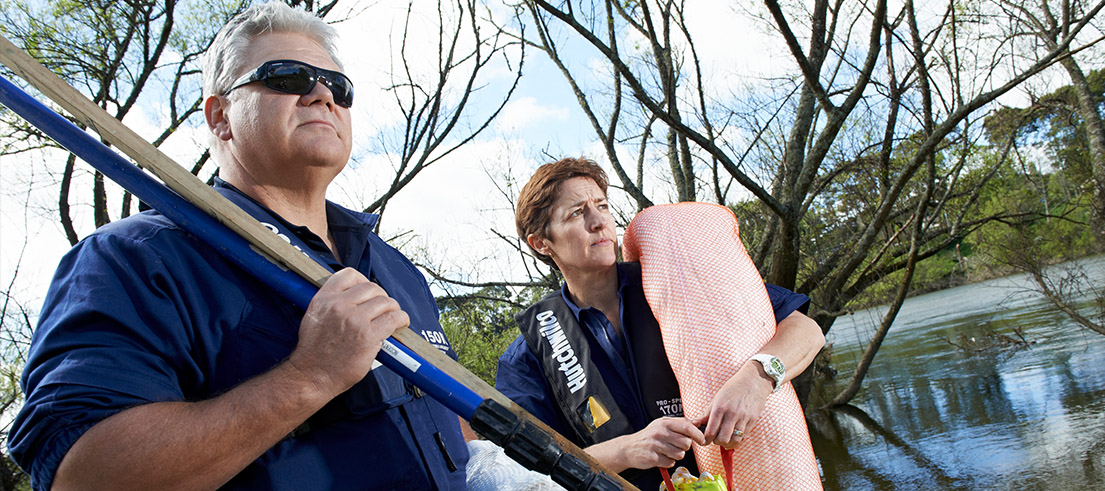
Independent report on regional council compliance, monitoring and enforcement
An independent report into compliance, monitoring and enforcement (CME) by New Zealand’s regional and unitary councils has found it is in relatively good shape and made recommendations on improvements.
Independent Analysis of the 2017/2018 compliance, monitoring and enforcement metrics for the regional sector was commissioned by the regional council sector and completed by Dr. Marie Brown from the Catalyst Group.
Dr. Brown said all 16 regional and unitary councils provided data, resulting in the most comprehensive report available on the sector’s CME activities under the RMA’s 27-year history.
“The report exceeds the publicly available detail on the activities of any other environmental regulatory regime in the country,” said Dr. Brown.
“Effective compliance, monitoring and enforcement of the activities carried out under resource consents is a significant tool in protecting our environment. Carried out poorly it can allow environmental damage to occur and delay any repairs that are needed.”
Crunching the numbers
Across New Zealand, there are around 200,000 resource consents issued by the 16 regional and unitary councils under the Resource Management Act. These allow people and organisations to use natural resources – air, land, water – provided they comply with conditions to minimise any potential environmental effects.

Around 50,000 of these resource consents needed monitoring because of possible environmental effects, and 92 per cent were monitored in the reporting year. There were, however, variable levels of compliance from region to region.

In addition, regional and unitary councils received nearly 30,000 pollution complaints, of which 87 per cent were responded to.

How are we doing?
Across the 16 regional and unitary councils, 436 full-time employees were assigned to compliance, monitoring and enforcement roles including monitoring of resource consents and responding to pollution incidents.
“Regional and unitary councils have generally improved significantly over the past decade in the way they administer their compliance monitoring and enforcement role.
Increasing capacity, professionalism, and monitoring and reporting processes are evident,” said Dr. Brown.
“The report also leaves the sector subject to criticism and analysis, which is brave and should be commended.”
Report provides a blueprint for the regional council sector
Environment Canterbury Chief Executive Bill Bayfield said the report and its recommendations provide a blueprint for the regional sector.
“The report looks at our collective capability and performance, highlighting where we are doing well and where we can make improvements,” said Bill Bayfield.
“The report has identified where there are gaps, which will help the sector set standards for best practice.
“These standards will be available for individual councils to assess their own systems and make improvements.
“We take compliance, monitoring and enforcement seriously. We know what is needed, have dedicated resources and systems, and are making a real effort towards consistency.
Investigations and prosecutions
“It is important to note that serious offending takes time to investigate and prosecute – sometimes up to two years. However, we have other enforcement tools in our kit.
“During the reporting year, the sector took more than 4000 formal actions – 905 formal warnings, 1844 abatement notices, 1289 infringement fines and 21 enforcement orders.

 “Forty-nine individuals and 60 corporate defendants were convicted, with the dominant offence being the discharge of contaminants.
“Forty-nine individuals and 60 corporate defendants were convicted, with the dominant offence being the discharge of contaminants.
Collectively, the prosecutions resulted in $2 million in fines, in addition to other approaches such as restorative work.
“In addition to our regulatory function, a big part of our work also includes education and engagement programmes. It is about getting what is right for our communities and making long-term improvements to our environment.
“The report does question the provision for chief executives to participate in decision making on prosecutions, however, MfE’s Best Practice Guidelines for CME under the RMA states this practice is acceptable, provided appropriate measures are in place to ensure a robust and transparent decision-making process.
The report has been shared with the Minister for the Environment; whose recent release of new National Planning Standards for the RMA is also timely.
“Ongoing improvements both at our regional regulatory level and at a national level to how the RMA operates, while reducing complexity and costs to both our sector and the end-users, all contribute to better environmental outcomes,” concludes Bill Bayfield.
Recommendations in the report for regional and unitary councils
- Standardise compliance, monitoring and enforcement definitions and practices at the national level (where possible) to improve consistency and to allow better comparisons of data.
- Councils with apparently low CME resourcing should review their activities to ensure they meet the minimum requirements of the Best Practice Guidelines.
- Continue to develop and improve CME information collection and management.
- Councils should review CME policy to ensure fair and transparent decision-making.
- Continue to improve the reporting of CME data to ensure it is robust and regular.
- Unitary councils should improve the separation of regional and district CME activities to make it easier to compare information across the sector, and to improve transparency for unitary councils.
Read the report
- Independent analysis of the 2017/2018 compliance monitoring and enforcement metrics for the regional sector – Full Report, prepared by Dr. Marie Brown
- Summary and key points (PDF File, 4.39MB)
